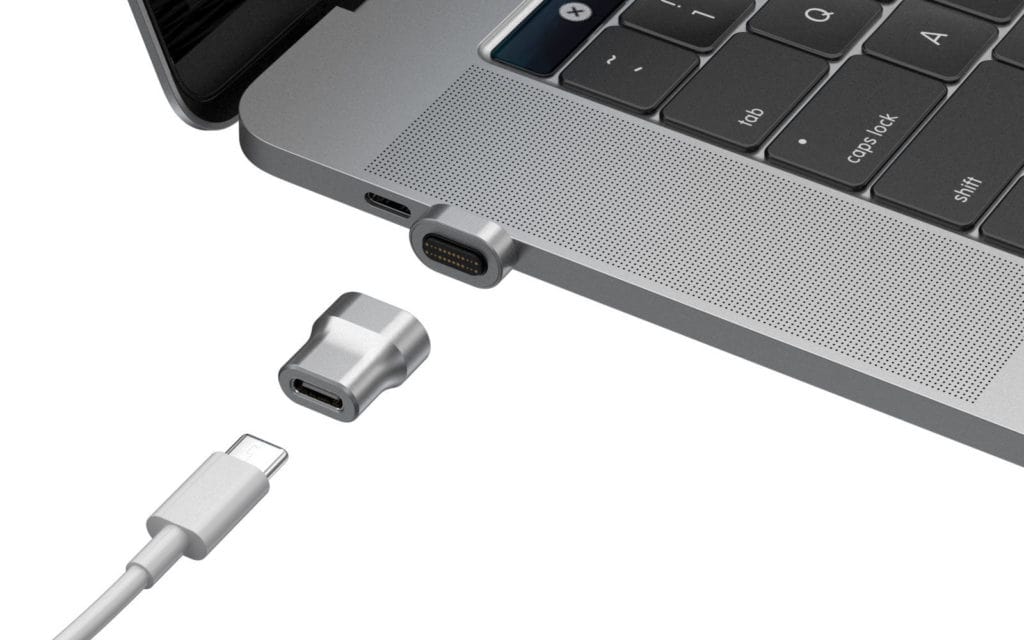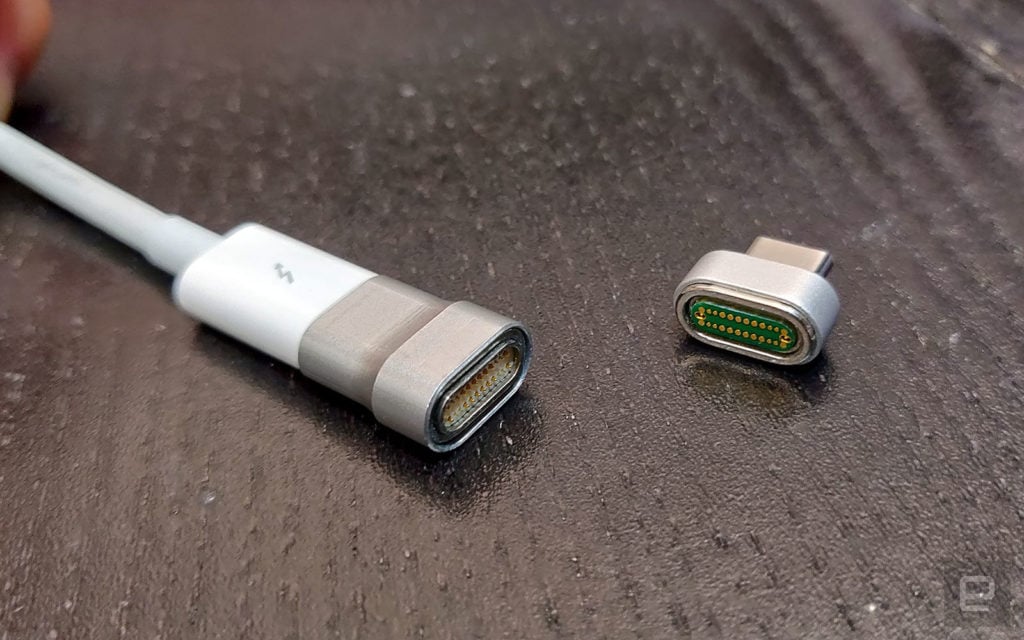
MagSafe makes a full comeback for your USB-C MacBooks
One feature that seasoned MacBook users may miss is the good ol’ MagSafe connector, because no one wants to accidentally drag a pricey laptop off the table. Alas, ever since Apple made the jump to USB-C, it decided to retire its handy magnetic invention — it even stopped short at releasing a MagSafe-to-USB-C adapter. There have since been a few third-party alternatives, with the earlier ones handling just power delivery (like Griffin’s BreakSafe cable), followed by the more advanced data transmitting types with mixed reviews — they tend to be bulky, nor did they support Thunderbolt 3’s full bandwidth, apparently.
This is where ThunderMag comes in. Developed by Innerexile over the past three years, this little gadget is claimed to be the world’s first truly Thunderbolt 3-compatible magnetic adapter. In other words, ThunderMag can pass through data at up to 40 Gbps (or video at up to 5K) while also delivering 100W of power, thanks to its 24 pins and delicate magnetic shaping — the latter to protect the cable’s high-frequency signal. And of course, the ThunderMag isn’t exclusive to MacBooks; just plug it into any Thunderbolt 3 or USB-C port on a device and you’re good to go.
Innerexile added that the ThunderMag has been put through reliability tests to ensure it doesn’t overheat — never exceeding 120°F or about 49°C. The device is also small enough that you can plug one right next to another on your MacBook. And don’t worry about those tiny pins, as they are shielded well enough to avoid accidental grinding.
Given that Innerexile picked Kickstarter as the launching platform for the ThunderMag, I was naturally worried at first. After all, direct competitors MagC and MagNeo also took to crowdfunding, and both ended up being super fishy (as is the case with many crowdfunding campaigns, sadly). Fortunately, I’ve been able to follow the ThunderMag’s progress closely, especially when I received the first prototype back in June last year. The near-final product I have now is thankfully a lot more polished, packing just the right amount of magnetic force to ensure the adapter breaks apart when the cord is pulled.

The only products that appear to pose a threat to the ThunderMag are the Snapnator connectors, which also boast a 40 Gbps speed, but Innerexile cautioned that this shouldn’t be possible with their mere 20-pin configuration — that would only get them to Thunderbolt 2 (20 Gbps) at best. In fact, Innerexile went as far as getting hold of those units for testing, and apparently those only delivered USB 3.1 Gen 2 speeds (10 Gbps). We’ll just have to take the company’s word for it.
The ThunderMag, on the other hand, have hit at least 17 Gbps in Innerexile’s own tests using a TEKQ Rapide Thunderbolt 3 portable SSD. With the latest of the three pre-production ThunderMags on me, I even hit about 19 Gbps at one point — almost touching the same SSD’s 2,500 MB/s read speed limit. And with the ThunderMag removed, I achieved near-identical speeds as it’s supposed to. Of course, this was only about half of Thunderbolt 3’s limit, but I’d probably need a crazy expensive SSD RAID array to go all the way.

Assuming the ThunderMag has no issue with even faster data transmissions, one question remains: Is it worth the investment — ranging from $39 to $49, depending on how early you back it on Kickstarter — just for that extra bit of protection? Well, if you or someone you know have a tendency to trip over laptop cables, then it probably is, though I’m not so sure with the full retail price of $79 when the ThunderMag hits the stores. For now, though, backers should receive their goods as early as April, but as always, proceed with caution.


